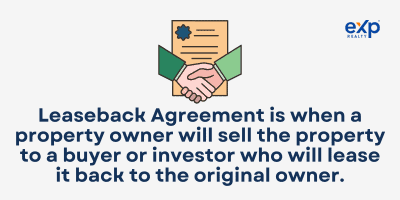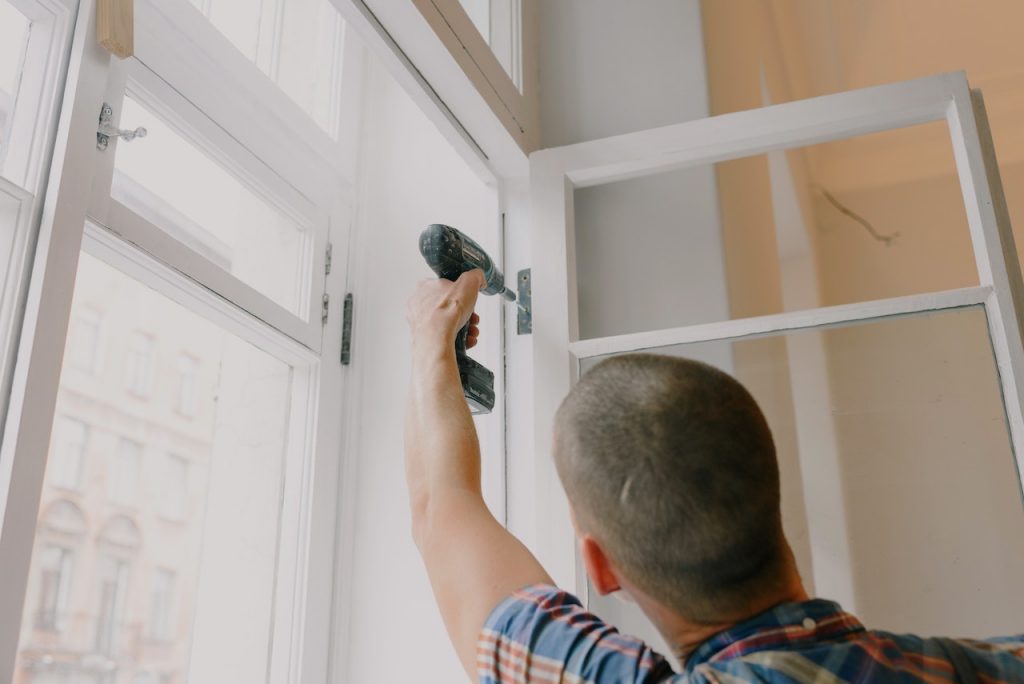It is not always possible for a seller to vacate their property at the exact time of sale, leading to an inevitable disconnect between when the deal is done and when it’s actually carried out. In such a situation, the ideal solution is to enter into a leaseback agreement. This allows the seller to both sell and remain in possession of their property.
For buyers who are looking at US homes for sale with sellers who can’t leave and close escrow simultaneously, comprehending leaseback arrangements is of utmost importance.
Also, some property owners choose a leaseback agreement to avoid assuming the risk from a fluctuating real estate market. The leasing company or the real estate investors assume all risk, and they can cash in their equity and have more cash flow than before.
What Is a Leaseback Agreement?

A property owner can choose a type of transaction called a leaseback option. Leaseback transactions can include houses, property, construction, and commercial equipment.
The property owner will sell the property to a buyer or investor who will lease it back to the original owner. The lease agreement must be detailed and specific, and the lessee must include the cost of the lease payments and the leaseback period.
Sale leaseback transactions are especially appealing to aging property owners who want to make the most of the financial benefit they have in their property. They can enjoy an increased cash flow, pay off their debt load, and stay in the home they love.
A sale leaseback is very common when a buyer leases the property back to the sellers for a period of time when they have not found another place to live by the closing date. The agreed-upon cost of the lease payments will reflect the property’s maintenance cost.
Types of Leaseback Agreements
There are several types of leaseback transactions, including the following:

Long-Term Leaseback
Property or business owners can choose a whole lease arrangement. The new property owner will offer a long-term lease for monthly rent, and the rental payments will cover the use of the entire property.
Partial Leaseback
A partial leaseback involves the owner leasing back a portion of the property. For example, the owner could offer a land lease or a lease on equipment. The new property owner must determine the rent payments and the period for the lease.
Joint Leaseback
A joint lease contract means that the property owner and the buyer are both responsible for the property. Both parties have access to the property and are responsible for business improvements, and they will share in the costs of insurance.
Commercial Leaseback Agreement

A leaseback option is a great incentive to include in the sale agreement. A short lease term might convince some buyers to finalize the sale in many cases.
A business can opt for a sale leaseback to a buyer looking for an investment property when it requires capital. They can sell their property, realize their capital and then lease the property back from the owners. The lease might include an office building or expensive equipment.
Business owners might choose a five-year lease or prefer 20-year lease terms. A company lease often includes a buyout option where the lease allows the company to make installments over time to buy back the property. In the meantime, the company can use the lease payments as a business expense.
Customary business practices include property improvements and business expansion. A guaranteed lease allows a company to manage its current cash flow needs as well as future cash flows.
Requirements for Commercial Leaseback Agreements
The business or company will have to create a detailed business plan that presents their business as a good option for a tenant. Business owners must document their preferred terms of the lease. You can identify areas of the property that you can improve with investor loans.
Before signing any contract of sale, the buyer and seller should consult with a lawyer to ensure that the sale leaseback rules are followed. A lawyer can advise you about any enforceable rights that you should know. They can determine if customary business practices are being followed.
A lawyer can include an exercisable option, such as additional time for a buyout lease. They can offer guidance on repurchase rights.
Business owners and investors should consult with a lawyer when writing the contract for the sale leaseback agreement. It is a legally binding document that will be a critical aspect of your company, and business owners will want to protect their interests in the long term.
How To Determine Rent for a Leaseback Agreement
The buyer and seller will have to work out a few details before deciding on the price of the leaseback rent. They must determine who will pay the utilities and the homeowners insurance and if there will be a damage deposit.
The operating lease must clearly state the buyer’s property access. Another consideration is the date on which the seller plans to move out. The buyer should include provisions in case the sellers need extra time.
The buyer must consider the monthly mortgage payments, the mortgage principal, interest, insurance, and property taxes to calculate the rent charge. Other fees, such as homeowners association fees and repair costs, can be factored into the lease term.
Typical sale leaseback agreements are at most 60 days. Buyers considering leasing property for an extended period to generate rental income will have to speak to their lenders, and buyers will have to be approved as investors. Lenders will want an excellent credit rating and a larger down payment before giving cash to investors.
Tips For Successful Leaseback Agreements
Before entering any financial transaction, you must negotiate the operating lease terms. It is best to consult with a real estate agent who will ensure that all details are in a legal document, and this document will protect the interests of the seller and the buyer.
All aspects of the lease transaction must be transparent. The lease must define the landlord’s responsibilities and any buyer-lessor obligation. Open communication will allow for a better business arrangement that will prevent misunderstandings down the road.
The exact dates for the lease term must be in the document, and you should include stipulations for additional time. The agreement must detail the rights and responsibilities of the seller and the buyer. It is important to note if the seller is permitted to sublet.
Maintenance and Repairs

Another important consideration is the buyer’s access to the property for the lease duration, and they may need access to make repairs or perform maintenance. The initial transaction will require a safety deposit held in escrow.
The lease must include the lease amount. The amount should reflect the property’s maintenance cost, and lessors must consider the current market rent rates. The lease amount must be reasonable and fair. You can also ask for prepaid rent.
The lessor can detail the late fees for missed rent payments. They can also include a daily rate if the sellers require additional time.
The document should include a description of the property’s condition. A walk-through of the property should be done before the initial sales transaction and then at the end of the lease. The lessor should advise the seller that there will be regular property inspections to ensure the lessee maintains the property.
A realtor can advise you on the aspects you must address in your legal document.
Key Takeaways
A sale leaseback is an excellent option for people who want to take advantage of the equity in their home. They can sell their home and lease it back until ready to move out.
A crucial factor to remember is that all details about the lease should be precise in the lease document. A lease document is a binding contract that will protect the interests of the buyer and the seller.
Both parties must understand the terms of the lease and honor their part. The buyer and seller must agree on all terms.
A business owner considering a sale leaseback might need some form of cash to invest in their business. A sale leaseback is a way to create a cash flow without worrying about a collateralized loan with high financing rates. Both parties must know every buyer-lessor’s right.
FAQs: Leaseback Agreement
Read on for some frequently asked questions.
Is leaseback a good idea?
A leaseback is an excellent idea for homeowners who are considering the sale of their homes. A leaseback allows them to stay in their home as they find another home to buy with the funds from the sale of their property.
What is the benefit of a sale leaseback?
There are distinct benefits of a sale leaseback. It allows sellers to convert assets into an infusion of cash, and they have the liquid capital to pay off debt or consider investment options.
What is sale and leaseback example?
John owns the land and decides to sell it to Peter. Peter will then lease the land to John for a monthly rental fee. John has the funds from the sale of his property, and he can continue to use his land.
What happens in a sale leaseback?
When an owner sells an asset to a buyer, the buyer leases the asset to the previous owner. The previous owner has the advantage of access to the property but does not have the responsibility that comes with ownership.
What are the risks of sale leaseback?
Some risks come with a sale leaseback. The lessor can refuse to renew the lease. The lease also pays lease payments instead of building equity, and they lose control of their property.
Is leaseback income taxable?
Yes, leaseback income is taxable, and the buyer must include the entire rental payment amount as taxable income. Buyers and sellers should look into the tax implications of a sale leaseback transaction.
Final Thoughts
You can search for properties or sign up to get alerts when properties matching your criteria come onto the market with us. Let us help you find what you are looking for, contact us today for more information. We look forward to working with you.





